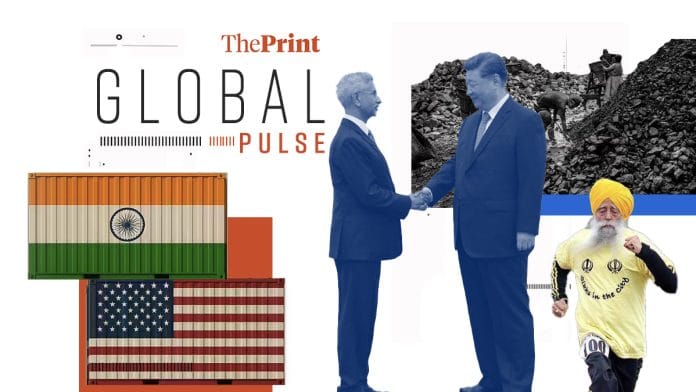New Delhi: External Affairs Minister Dr. S. Jaishankar is in China, for the first time since the 2020 Galwan clashes. He met his Chinese counterpart Wang Yi as well as President Xi Jinping in Beijing. Amid the crucial visit, an editorial in Global Times calls for the recalibration of the India-China relationship, saying that they should be “partners” and realise the “dragon-elephant tango”.
“China and India are currently at a crossroads, facing both the risk of real-world frictions and the prospect of broad cooperation. Against this backdrop, the continuous advancement and deepening of China-India bilateral exchanges, including high-level diplomatic interactions, provide both countries with an important opportunity to re-examine each other’s strategic positioning and to enhance mutual understanding and communication,” it reads.
“In particular, when it comes to shaping the security order in the Asia-Pacific region, the smoother the coordination and dialogue between China and India, the less uncertainty the entire region will face.”
John Reed in Financial Times’ India Business Briefing draws focus to the India-US trade ‘deal’. As the 1 August US tariff deadline draws closer, what could possibly work in India’s favour are its relations with the country in terms of the rising cooperation on “defence, tech, trade”, he writes.
India’s trade negotiators are in Washington in pursuit of a “framework deal”, which as exclusively reported by ThePrint, has been “almost” agreed upon.
“According to people briefed on the talks, New Delhi and Washington are arguing over what finance minister Nirmala Sitharaman calls ‘red lines’: mostly, opening up its protected, politically sensitive grain and dairy markets to US exporters,” Reed writes.
The New York Times throws the spotlight on the “startling achievements” of Fauja Singh in an obituary. The British-Indian marathon runner rose to fame in 2011, delivering a “stirring performance” at the age of 100. He went on to break world records, which have never been ratified, owing to his inability to produce a birth certificate, and the possibility of him having received help to cross the finish line.
“Mr. Singh’s case became emblematic of the difficulties race officials faced in determining the ages of elderly runners, especially when the athletes were born in places where birth certificates were unavailable or lost during tumultuous times,” the obituary reads.
On Monday, he died in a road accident in his village of Beas Pind in Punjab at the age of 114.
“His efforts reflected perseverance and resilience among the aging,” his former coach Harmander Singh is quoted as saying, adding that “Queen Elizabeth II had sent Fauja Singh a telegram on his supposed 100th birthday in 2011 and another when he was said to have turned 105”.
Also in NYT, Anupreeta Das reports on the “language wars” that are currently shaping political discourse across states––dabbling in language comes with “political peril”.
“But even as they publicly celebrate the country’s polyglot nature, leaders of Mr. Modi’s political party, the Bharatiya Janata Party, have made the spread of Hindi a cornerstone of their overarching goal of remaking India into a Hindu-first nation,” reads the report.
Meanwhile, India must deal with two conflicting priorities. The ‘net zero by 2070’ bid requires the elimination of coal. But it refuses to let go, citing a rising power demand, reports Navin Singh Khadka for the BBC.
“With all these factors at play, India is looking to reduce emissions from coal-fired power plants, instead of phasing out coal completely. A recent report by the CSE said that decarbonisation from coal-based thermal plants alone can cut down the country’s greenhouse gas emissions by 30%,” the report notes.
(Edited by Mannat Chugh)






